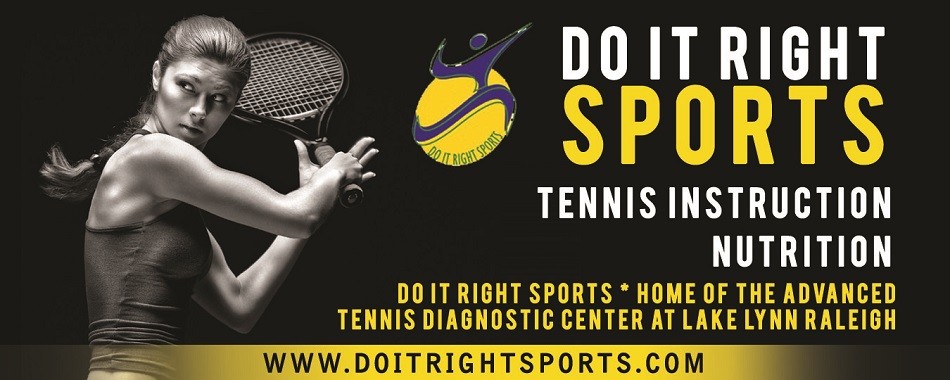Each of the six general performance components includes a number of subcomponents. There are 43 subcomponents on the chart on the previous page. The following is a brief definition for each of the subcomponents of learning.
Physical |
Tactical |
||
| Motor skills Training and coordination of both gross and fine motor skills (e.g., running, hops, skips, jumps, carioca and eye-hand skills such as catch, dribble, throw, etc.) Conditioning Aerobic and anaerobic conditioning (i.e. endurance and sprint training in conjunction with tennis-specific training) Speed, agility, quickness Drills related to reaction, change of direction, all types of tennis movement, footwork and plyometrics Strength Exercises using own body weight (e.g., push-ups, sit-ups, etc.) ,free weights or machines, plyometric drills Nutrition Hydration before, during and after matches, eating a healthy diet based on age and training demands Flexibility Warm-up, cool down and stretching principles, for injury prevention and training demands Medical Knowing basic injury prevention and treatment (e.g., RICE), seeking appropriate medical attention and treatment when required.
Gauging an incoming ball’s characteristics and flight path (e.g.,spin, pace, depth, direction, etc.) Racquet skills Learning to use a racquet as the extension of the arm and adjust the racquet face to control the ball Shot fundamentals Learning the foundations of all shots – from anticipation to execution Ball control Learning to control spin, pace, depth and direction of various shots Movement and footwork Perfecting footwork for prediction, interception, preparation and recovery within specific shots or sequences Modern shot technique Understanding the specifics and complexities of the modern angular game Developing weapons Developing one or more punishing shots that are hit as winners or that force errors with great regularity Developing game style Understanding one’s strengths and creating a playing style to capitalize on them. |
Consistency The ability of a player to get the ball back more times than an opponent using optimum pace and control Placement Selecting a target and hitting the ball there Patterns Combinations of shots that help achieve a strategy (e.g., hitting crosscourt to open up the down-the-line shot) Spins Developing offensive and defensive spins for control and power Power Imparting pace on shots for both offensive and defensive purposes Shot selection Deciding placement and type of shot to be hit (offensive, defensive, neutral) Game situations Ability to execute all of the above in a competitive situation.
The ability to reproduce tactics that have proved successful against an opponent Recognizing strengths Knowing one’s strengths and weaknesses and using that knowledge to develop a game plan or tactics against different opponents Game style Understand and distinguish between game styles and knowing how to use them and defend against them Surfaces Knowing all types of playing surfaces with their individual playing characteristics and the ability to adapt to each of them appropriately Game situations Adapting to typical playing conditions that occur during a game in a match (e.g., playing ad points, etc.) Match situations Adapting to playing situations that occur during a set in a match (e.g.when to change a losing strategy) Tournament situations Adapting to the variety of challenges that occur in the normal course of a tournament |
||
Mental |
Environmental |
||
| Self-esteem Building players who have confidence and satisfaction within themselves Confidence Developing self-assurance and trust of a player’s self-sufficiency Independence Building self-reliance in players to meet the arduous challenges in an individual sport such as tennis Discipline Training that is expected to produce a desirable character or patterns of behavior most suitable to the game of tennis Temperament Developing an ideal manner of thinking, behaving, and reacting that is characteristic of a successful tennis player Concentration Developing players who can control the direction and attention of their thoughts and focus on the primary task at hand Goal setting Training players in goal setting and how to periodize their goals and accomplishments based on level and aspirations Sportsmanship Reinforcing in players the qualities and conduct befitting competitors who react to victory and defeat graciously Competitive readiness A combination of the eight aspects above to create a supreme level of mental and physical performance |
Fun An enjoyable and pleasurable atmosphere must be created in all aspects and levels of learning, training and playing (e.g., even world-class players have fun playing and winning) Home Importance of support mechanisms that include the immediate family and geographical environment. (e.g., competitive players generally have a very supportive family structure and live in a city or state with a strong tennis environment) Social Structuring a social environment that enhances the likelihood of a player reaching the desired level of play (e.g., if a player has friends who play only other sports, socializing takes time away from tennis) Economics Economic resources affect player development in that they may increase opportunities for coaching, travel, etc. Coach or parent should know where economic aid is available for less privileged players Competitive Analyzing and producing the best competitive conditions for players by managing (or training the players to manage) the challenges both on court and off (e.g., periodization of key elements of training, arranging competitive practices, tournament selection and travel, etc.) |
